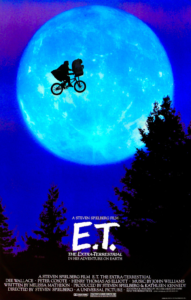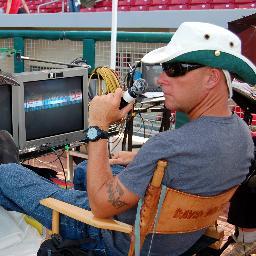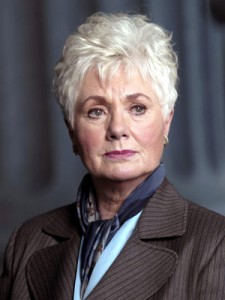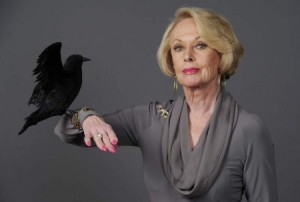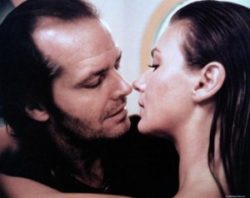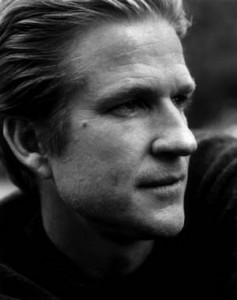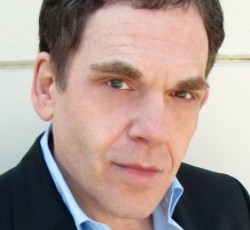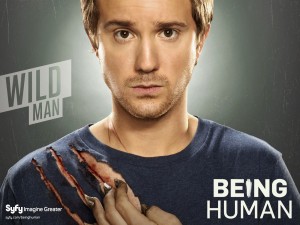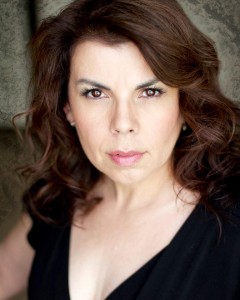Even if I had never seen 1993’s “The Sandlot” I could have quoted it line by line for you. I coached youth baseball for 15 years and it was, by far, the most quoted baseball film on the field. “You’re killing me, Smalls!” “You’re an L7 weenie.” And, of course, “you play ball like a girl!” Nothing like enjoying the good sportsmanship of 13 and 14 year olds. But if you’re going to be a ballplayer you need to talk like a ballplayer. And at one time, writer/director David Mickey Evans was a ballplayer.
Now touring the country in conjunction with the 20th Anniversary of “The Sandlot,” Mr. Evans has behind him an impressive resume of filmmaking. I first discovered his work when I took in 1992’s “Radio Flyer.” Inspired by his own turbulent childhood, the film was a moving look at the bond between two brothers dealing with a brutal step-father. (NOTE: I met Adam Baldwin, who played the step-father in the film, this past summer and I told him the same thing I told Mary Tyler Moore when I met her after seeing “Ordinary People” – – -“I HATED you in this film.” He thanked me.) The next year saw the release of his most popular film, “The Sandlot.” Since then he has written and/or directed popular sequels to both “The Sandlot” as well as in the “Beethoven” series. During our pre-interview conversation I discover we both not only played baseball as kids but were huge fans of the popular sports books of the 1960s and 70s written by Matt Christopher. We also talked about the game of baseball and our love for it. That’s where the interview begins.
Mike Smith: I know you’re a big baseball fan. Did you play when you were younger?
David Mickey Evans: Oh yeah. We occasionally played organized Little League but you had to pay money and we were really poor. So most of the time we’d play in park leagues. You’d have the dude that owned the local bar getting you T-shirts…kind of like “The Bad News Bears.” I was really good. I played in quite a few local leagues near Pacoima (California) in the San Fernando Valley. I was on the Cardinals…the Giants…I was on the Indians, which was a big team, when I was about eleven. If memory serves…I wonder if you can find this on the Internet…I think I hit .560.
MS: Was “The Sandlot” inspired by any of your childhood baseball memories?
DME: Here’s the thing. The “A-Ha” moment for me was an incident I remembered from when I was a kid. The kids on the block didn’t like my friends and I. They would beat the crap out of us all the time. There were playing baseball one day and they hit their ball over the fence. They told my little brother to go get it. They said if he did then we could play with them. Of course, they had no intention of that. They just wanted their ball back. And there was a big dog on the other side of the fence named Hercules that went after my brother and bit him…ripped his leg to shreds. It was a bad memory. But one day I was in my car and I thought, “wait a minute…what if these guys were all buddies? What if that ball was worth $3 million?” I’ve got a movie. None of the kids in the film are any kid I knew. All of the kids are an amalgam of EVERY kid I knew. But what I like to say most about the film is this. When Walt Disney finished Disneyland in a year and a day and he’s walking down Main Street U.S.A…and still, today, of all the parks Disneyland is still the best…and he has some dignitaries with him. Now Main Street U.S.A. is modeled after the way Walt Disney remembered growing up in Marceline, Missouri. It wasn’t actually his boyhood home but it was the one he identified with. The dignitaries say to him “Walt, you did it. This is exactly the way it was back then.” Disney tells them that it’s not. It’s the way it should have been. “The Sandlot” is the way I wanted my childhood to have been. That’s not how it was. Luckily God has given writers a time machine…a pencil on paper. (My work phone rings) Is that a flip phone?
MS: Yeah, it’s my work phone.
DME: Where did you get that? (laughs) I didn’t know they still exist!
MS: One of the questions my son asked me to ask you was if any of the boys you played with went on to play professional baseball. Was there a real life Benny “the Jet” Rodriguez?
DME: You know there’s always that kid. I remember one or two kids from grade school…when you get to about third or fourth grade you start recognizing them…they’re just BETTER athletes. Or students. You just start noticing them and you want to be like them. You wish you could kick that kickball as far as they can. And that kind of kid is specifically on whom I built Benny “the Jet.” And here’s something else. The “Jet” nickname didn’t just come because he was fast. When I was a kid I took karate lessons for a little while and I studied with the Urquidez brothers. The most famous of them is Benny. They called him “the Jet” because his hands and feet were so fast. I saw him a few years ago. He’s got to be 60 and he could still clear a bar! He’s an incredibly fit and ridiculously athletic man. (NOTE: Now age 61, Benny “the Jet” Urquidez amassed an incredible professional fighting record of 49-1. He trained Patrick Swayze for his role in “Roadhouse” and can be seen in the film in the scene where the monster truck gets driven through the auto dealership). I always admired him when I was a kid. He was like a super hero to me. That’s why Benny got “the Jet” in the middle of his name.
MS: Are you surprised at the response “The Sandlot” still gets 20 years later? How many memories it triggers in a person. I mean, 20 years before it came out I was the kid riding with my friends over to the next town to play baseball all day. In the neighborhood we’d play all day until our moms called us in for dinner. In 1993 it was my son doing the same thing. And I’m sure 20 years from now my grandson will be doing it.
DME: I don’t know if I’m surprised. Obviously you can’t predict that kind of reaction. You just have to go for it as a filmmaker and if it stands the test of time….what else is there? It still stands the test of time and I’m incredibly grateful for that. That means I did my job. And I’m satisfied that I did my job right. This is also the only one of my films where the studio left me alone…they let me do it the way I wanted to do it. It wasn’t committee filmmaking, it was me. My crew. My cast. But you can never predict that. I wish I could. I would bottle it, I would sell it and you would never see me again (laughs). I had a guy come up to me in Springdale, Arkansas and he had (12) copies of “The Sandlot” on DVD and he asked me to sign them. While I was signing them he’d say, “this one is for me, this one is for my wife, this one is for my kids, this is for my grandkids and this is for my great-grandkids.” Four generations right there. I gave that guy the biggest hug. That was better to me than winning an Oscar. I was in Utah earlier this year at the location where we shot the film. The Utah Film Commission had re-built the backstop, cleaned up the field and made it look exactly like it did on the original field. They could only seat 1300 people for the event and they sold out in 11 minutes! They dedicated a historical marker to me and the film. I’m serious, they can keep the Oscar!
